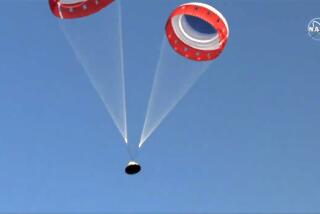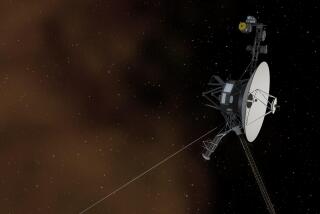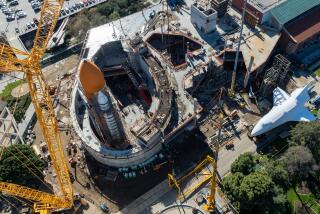New Satellite System Delayed at Least Six Months
- Share via
WASHINGTON — The tragic explosion of the space shuttle Challenger has forced a delay of at least six months and probably much longer in the planned operation of a new space-based system for tracking and communicating with satellites and other spacecraft.
The Challenger was carrying a tracking and data relay satellite that would have completed a network intended to improve communications between ground and space.
Also in the cargo bay of the ill-fated Challenger were a space probe to study Halley’s comet and a number of scientific experiments, including three that had been designed by high school students and would have been carried out by teacher Sharon Christa McAuliffe.
The $100-million spacecraft communications satellite was identical to one launched in April, 1983, now in an orbit over the Atlantic Ocean. The second space relay station was intended for a similar orbit over the Pacific Ocean.
23 Spacecraft in Link
Together, the two satellites--supported by a single ground station in White Sands, N.M.--could have linked as many as 23 spacecraft in low Earth orbit into a communications network. The shuttle itself and the Landsat Earth resources satellites are among those that would use the two relay satellites.
NASA said the network of two satellites and one ground station would have replaced 12 existing ground stations scattered around the globe.
The network had been scheduled to go into operation as soon as the second satellite was placed in orbit. The system is owned by Space Communications Co. of Gaithersburg, Md. The satellite was built by TRW Space and Technology Group of Redondo Beach, and the ground facility was designed by Harris Government Communications System Division of Melbourne, Fla.
The $5-million Halley’s comet probe was intended to study the comet when it moves too close to the sun to be watched by ground observatories. The probe, designed by the University of Colorado’s Laboratory for Atmospheric and Space Physics, included instruments to measure ultraviolet emissions as well as cameras to photograph the comet when it was near the sun and most active.
Photos Through Windows
In addition to launching the probe, the Challenger crew had been scheduled to photograph the comet through the shuttle’s windows.
The Challenger’s on-board scientific experiments were mostly related to McAuliffe’s status as the first teacher in space. The shuttle carried experiments designed by three students who were in high school at the time they prepared the projects and are now in college.
Also scheduled were a test of phase partitioning, an inexpensive technique for separating such organic materials as cells and proteins, and an experiment to determine the behavior of fluids in space.
More to Read
Sign up for Essential California
The most important California stories and recommendations in your inbox every morning.
You may occasionally receive promotional content from the Los Angeles Times.













